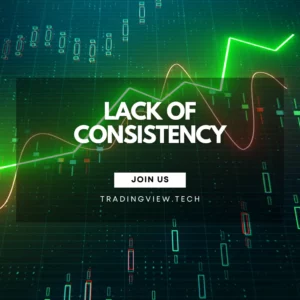One of the most common and costly mistakes traders make is failing to adapt their strategies to the ever-changing conditions of the market. Financial markets are inherently dynamic—what works perfectly in a trending environment can fail miserably in a sideways or range-bound market. Rigid adherence to a single trading style, without regard for context, often leads to frustration, mounting losses, and eventually burnout. The key to long-term success is not finding a “holy grail” strategy but developing the awareness and flexibility to adjust your methods as the market evolves. Adaptability isn’t optional—it’s essential.
Understanding Market Phases
Every market alternates between distinct phases, and knowing which phase you’re trading in is fundamental to strategy selection. Broadly, markets exhibit two primary conditions: trending and range-bound.
A trending market is characterized by clear directional movement—either upward (bullish) or downward (bearish)—with higher highs and higher lows (uptrend) or lower highs and lower lows (downtrend). In such environments, momentum-based strategies like breakout trades, trend-following systems, and moving average crossovers tend to perform well. The idea here is to ride the momentum and let profits run.
On the other hand, a range-bound market moves sideways within a horizontal channel, where prices fluctuate between support and resistance levels without any sustained direction. During these periods, trend-following strategies often fail due to false breakouts and whipsaws. Instead, mean-reversion approaches, such as buying near support and selling near resistance, tend to yield better results.
Recognizing which phase the market is currently in helps traders apply the appropriate strategy, align expectations, and manage risk more effectively. Misreading the market phase—like applying trend strategies in a choppy range—can lead to a string of losing trades and erode trading confidence.
Identifying Signs of Market Transition
Market conditions rarely stay static for long. A major skill that separates consistently profitable traders from the rest is the ability to detect early signs of transition—when a trending market starts consolidating, or when a quiet range begins to break into a trend.
From a technical analysis standpoint, there are several key signals to watch:
- Decreasing volatility can be an early indicator that a trend is losing steam. For example, narrowing Bollinger Bands or a falling Average True Range (ATR) suggests that momentum is fading.
- Failed breakouts are another red flag. If price repeatedly tries to break above resistance or below support but quickly reverses, it may signal indecision and a transition to a range-bound state.
- Divergence between price and momentum indicators (e.g., RSI, MACD) often hints at a weakening trend or an upcoming reversal.
From a fundamental perspective, shifting economic indicators, changes in central bank policy, or unexpected geopolitical developments can alter the market landscape. For instance, a bullish trend in equities may stall if inflation data comes in hotter than expected or if central banks signal tighter monetary policy.
It’s also crucial to monitor volume. A rising trend on declining volume can signal exhaustion. Conversely, a breakout with high volume often suggests a genuine shift in market structure.
Being attuned to these signals allows traders to proactively adjust their strategies rather than reactively scramble after the fact. Anticipation, not reaction, is what puts adaptive traders ahead of the curve.
Common Pitfalls of Inflexibility
One of the fastest ways to burn through a trading account is to treat the market like a static environment and apply the same approach regardless of its condition. Inflexibility in trading often stems from overconfidence in a “proven” strategy, emotional attachment to a method, or simply a lack of understanding about how different market types behave.
Overtrading is a common symptom of this rigidity. For example, a trader who thrives during trending markets may continue trying to force trades even when price action flattens out. In a range-bound market, signals that once led to profitable entries during strong trends may now produce whipsaws, fakeouts, and stop-outs. Instead of adapting, the trader keeps firing off trades in hopes that the market will “return to normal.” This leads to frustration, emotional decision-making, and often bigger losses.
Another pitfall is chasing trends in flat or consolidating markets. This often happens when a trader continues using breakout strategies in an environment with no clear direction. The result is entering positions at the edges of a range, just before price reverses back toward the middle. This cycle of entering late and exiting early creates a string of losses that could have been avoided with better market awareness.
Traders may also fall into the trap of confirmation bias, where they only seek information or chart patterns that validate their current strategy—even when evidence clearly points to changing conditions. Instead of stepping back and reassessing, they double down and ignore warning signs.
Another issue is the failure to reduce risk during uncertain periods. When a strategy starts underperforming, inflexible traders often maintain or even increase position sizes to “make back” losses, rather than scaling down or stepping aside to recalibrate. This emotional response to drawdowns can quickly spiral into catastrophic losses.
Ultimately, rigid traders become reactive rather than proactive. They’re always a step behind the market, trying to force their strategy onto an environment that has already shifted. Flexibility is not just a skill—it’s a survival mechanism in a landscape that rewards adaptability.
Adapting Trading Strategies
Successful trading isn’t about having one perfect setup—it’s about knowing when and how to adjust your playbook. Adapting strategies to fit current market conditions is what separates short-term luck from long-term consistency.
In a trending market, traders often favor momentum and breakout strategies. This could mean using tools like moving average crossovers, higher-timeframe trendlines, or breakout patterns (like flags, pennants, or ascending triangles). The goal in these conditions is to catch the move early and ride it as long as the trend remains intact. For example, a trader might enter long positions when price breaks above resistance with increased volume, setting wider stop-losses to allow room for volatility and trailing stops to lock in profits as the trend develops.
However, when the market shifts to a range-bound or consolidating phase, these same breakout trades are more likely to result in losses due to false moves and price reversals. In such cases, a trader must shift gears and implement a mean-reversion strategy. This could involve using oscillators like RSI or Stochastic to identify overbought or oversold conditions, then entering trades near key support and resistance zones. Instead of looking for follow-through, the trader expects price to revert to the mean—usually a central moving average or median line.
Adaptation can also involve changing timeframes. In a choppy market, lower timeframes may offer better clarity and shorter holding periods, whereas trending markets may reward higher timeframe setups for more sustained moves.
Even within the same strategy, parameter adjustments can make a significant difference. For example, in volatile conditions, a trader might increase the ATR-based stop-loss multiplier or widen Bollinger Bands to reduce premature exits. In calm markets, they might tighten stop-losses and take quicker profits.
It’s also important to adapt position sizing and risk management. In less predictable markets, a trader may choose to risk only 0.5% per trade instead of the usual 1%, or reduce the number of open trades to limit exposure. Conversely, when market structure is clean and confidence is high, scaling in with partial positions can maximize returns without taking on unnecessary risk.
Adaptability isn’t about constant tinkering or changing strategies every day. It’s about being aware of the broader environment, understanding how your tools behave in that environment, and making calculated adjustments when necessary. Think of it as strategic evolution—adjusting to survive and thrive in whatever terrain the market presents.
Dynamic Risk Management
Adapting trading strategies is only half of the equation—risk management must evolve in tandem. A static risk model applied across all market conditions is like driving at the same speed regardless of weather, terrain, or traffic. What works in a calm, trending environment can be disastrous in a choppy or volatile market. Effective traders recognize this and implement dynamic risk management as a core part of their adaptive edge.
In highly volatile markets—often marked by wide price swings, sharp reversals, and news-driven moves—tightening stop-loss levels can help protect capital from unexpected breakdowns. However, tightening stops doesn’t always mean placing them closer to entry. It can also mean using volatility-adjusted indicators like ATR (Average True Range) to set realistic, adaptive stops that account for the current “breathing room” a trade needs, rather than using fixed pip or point distances.
At the same time, traders may choose to reduce position sizes during these uncertain periods. For example, instead of risking 1% of their capital per trade, they may lower that to 0.5% or even 0.25%. This allows them to stay active in the market while controlling emotional pressure and protecting the downside. In contrast, when conditions are stable and predictable—such as during strong trends or clear breakouts—traders might cautiously scale up position sizes or use pyramiding techniques to add to winning trades.
Another adaptive tool is trading frequency adjustment. When markets are erratic or unclear, pulling back and taking fewer trades is often the smartest risk management move. Sitting on your hands is also a position—sometimes the best trade is no trade.
Correlated exposure is another factor to consider. In highly correlated markets (like all major FX pairs moving with the USD), trading multiple instruments at once can unintentionally amplify risk. During such times, limiting exposure across similar assets can prevent cascading losses.
Lastly, risk-to-reward expectations should shift with the environment. In range-bound markets, aiming for 1:1 or 1.5:1 risk-reward may be more realistic than shooting for large trend-following targets. In trending conditions, traders may widen targets to 3:1 or more, letting winners run while managing the trailing stop to lock in gains.
The bottom line: risk management isn’t a set-it-and-forget-it mechanism. It’s a living, breathing framework that should contract and expand as market conditions dictate. The most successful traders treat capital preservation as their top priority and adjust their risk lens continuously to stay aligned with reality—not wishful thinking.
Continuous Learning and Feedback Loops
Markets are ever-changing, and even the best strategy will eventually face periods of underperformance. The only way to evolve and stay consistently profitable is through ongoing learning and systematic self-review. Trading is a skill that improves not just through screen time, but through structured reflection and feedback loops.
One of the most powerful tools for this is a trading journal. Not just a log of entries and exits, but a detailed record that captures:
- The rationale behind each trade
- The market context at the time (e.g., trend, volatility, macro factors)
- Emotional state before/during/after execution
- The outcome and whether the trade followed your plan
Reviewing your journal on a regular basis—weekly or monthly—can reveal hidden patterns. Maybe you tend to force trades on Mondays, or perhaps you underperform during low-volume sessions. Without tracking, these habits remain invisible and continue to sabotage progress.
Another critical component is performance metrics. By calculating your win rate, average risk-to-reward ratio, expectancy, drawdowns, and streaks, you can separate randomness from skill. This data-driven approach helps identify not just what works, but what’s sustainable. It also builds the confidence to adapt your strategy based on facts rather than fear or frustration.
Post-trade analysis should go beyond just winners and losers. Ask:
- Was the trade aligned with the market structure?
- Did I manage the position effectively?
- Was the size appropriate for the market conditions?
- If I exited early, why?
Feedback loops aren’t just for errors—they also reinforce good behavior. Documenting well-executed trades—even if they were breakeven or losses—builds a mental blueprint of disciplined, high-quality decision-making.
Lastly, engage with external sources of insight. This could mean backtesting strategies, attending webinars, analyzing seasoned traders, or even participating in trading communities where ideas and experiences are shared. Staying isolated can slow growth, while curated exposure to other perspectives can spark breakthroughs.
In trading, stagnation is regression. Those who view every session as an opportunity to refine their edge—through learning, analysis, and strategic adjustments—are the ones who stay relevant and profitable over the long haul.



